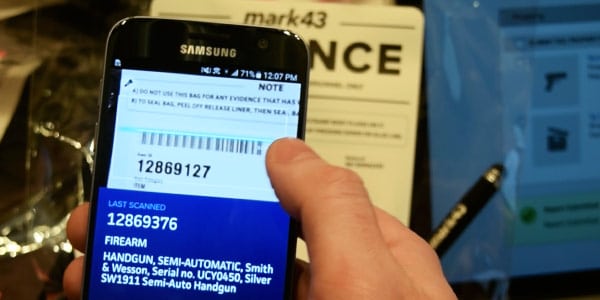
‘It’s nice to dream.’
That was one of the first comments I ever received after asking a room of evidence staff if a mobile application would solve some of their problems. I had just finished my first day in the life of an evidence staff member, walking around with them and understanding the pain points of their job. One of my primary goals of the day had been to better understand how evidence staff were using barcodes and scanners in their daily lives.
You see, evidence warehouses share a fair amount of similarity to most storage warehouses. Items come in, their movement and storage details must be accurately tracked, and at some point the items leave; this could be through releasing the items to an owner, transferring items to other agencies, or even incinerating illicit substances. Barcodes are supposed to speed up the overall process of viewing and tracking easier — the thought being scanning updates into a system are faster than manually inputting them.
That was the idea — the only problem was, the items hadn’t updated in the system when I was being shown how it works. ‘It’s the range’ the clerk uttered in a flat tone, still standing on the ladder he had used to reach the item. ‘All these scanners are bluetooth, and if we move too far away from the computer it won’t register.’ Curious, I pointed to a rather large crate sitting in the opposite corner of the warehouse, asking what happens when items in that needed to be scanned. A wry grin appeared on the clerk’s face, as he silently nodded to a cargo lift tucked away in the back of the warehouse.
This is one of the few problems I saw through the course of the day centered around hardware failing to make a clerk’s job easier. Want to conduct an audit? Go hunt down all those items, bring them back to home base, scan them, THEN return them all to where you started. Want to see if this item sealed in the box is the item you’re supposed to be grabbing? You guessed it, bring it back to the computer and scan it to bring up the details. Want to check the chain of custody? Well, good luck.
These inefficiencies were costing departments their most valuable resource — time. For example, the simple process of digitally recording identification during an item’s release usually takes about 5 minutes. Plan on releasing to more than 5,000 people a year? That ‘little’ 5 minute repetitive process suddenly turns into 17 days worth of evidence staff’s time. While traditional scanners might have been making some processes faster, the net result seemed negative.
When we started peeling back the layers, we realized that we could centralize these disparate and repetitive processes into one place: a mobile application. Mobile phones come with a built-in camera, the ability to display data, and the ability to update software without requiring users to buy new hardware. After a journey of countless iterations and interviews, we ended up with a truly unique offering — an evidence-focused app that will scan, update and release items in a beautifully seamless way.
We didn’t make a mobile app because we thought it was trendy. We made it because it was the best technology to solve the complex and unique difficulties evidence staff have to deal with on a day-to-day basis. We built it because we believe that software built right should make jobs easier. We built it because we owe it to our users to push the boundaries on what’s possible, and to fix what for so long has been broken.
‘It’s a nice dream’ – I remember the room emanating with soft chuckles afterwards, acknowledgement of an industry that has a long history of over-promised and under-delivered software. Every so often though you get that special mix of impeccable user feedback, obsessive focus on the pain points, and creative innovation that makes something so impossible sounding a reality.
With the launch of Mark43’s first mobile app, I’m happy to say dreams can come true.




